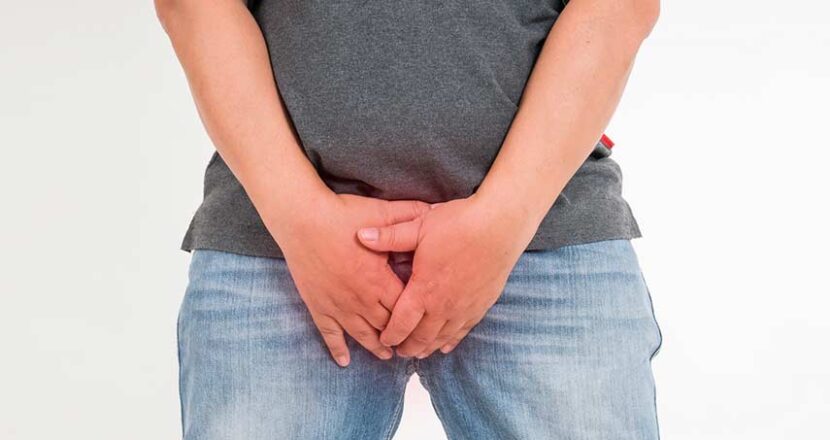The testicles are a vital part of the male reproductive system because they are the glands that testosterone and sperms are produced in. The testicles are usually contained in a sheath called the scrotum which hangs out of the body. The scrotum lacks any bone that can protect it from injury but hangs outside of the body to maintain the optimum temperature that the sperm cells need to survive.
Urinal tract infection in males is usually not a very common phenomenon but there are instances where men may suffer an infection of their testicles that can adversely affect their health and fertility. Infections that affect the testicles consist of a number of disorders in which testicular pain is usually the main symptom.
What are the Causes of Testicular Infections?
The disorders linked with testicular infections which are usually characterized by testicular pain include orchitis, epididymitis, testicular trauma, and testicular torsion.
- Epididymitis: Is the swelling of the epididymis which is the highly convoluted duct found behind the testis through which sperms travels to the vas deferens.
- Orchitis: Is the swelling of one or both of the testicles.
The two named disorders may be caused by a number of viral and bacterial organisms but epididymitis usually accounts for the highest percentage of testicular or scrotal pain in men who are over the age of 18 years. Epididymitis is commonly caused by a certain bacterial infection which affects the epididymis.
When the epididymis is infected by viral or bacterial infections the testicle also gets infected easily because the epididymis is directly attached to the testicle. In most men who are actively engaged sexual activity the most widespread cause of epididymitis is usually occasioned by sexually transmitted diseases e.g. Gonorrhea.
Mostly these infections usually originate from the urethra causing urethritis which after sometime usually move into the testicle.
There are several other causes of epididymitis in men which may include obstruction in the bladder outlet occasioned by the enlargement of the prostate due to aging. It could also be caused by bacterial prostatitis (an infection which affects the prostate gland).
Testicular torsion, on the other hand, is simply the twisting of the spermatic cord, artery or vein which then cuts the supply of blood to the testicle and the surrounding structures found in the scrotum.
If this condition is left unattended within the quickest time possible, the testicle tissue will die as a result. In cases where there is testicular torsion then diagnosis and surgery should be commenced in a maximum of 6 hours.
What are the Symptoms of Testicular Infection?
Below are some symptoms of testicular infection that will be experienced by most men:
- Sudden pain in the testicles (it may be experienced in either one or two of the testicles).
- Inflammation of the scrotum.
- Fever.
- Chilly feelings.
- Discharge from the penis.
- A lump in the testicles.
- Blood seen in the semen.
- Feelings of nausea and vomiting in some cases.
- Feelings of fatigue or even fainting in some individuals.
- Painful urination.
- Pain during intercourse particularly when ejaculating.
- Feeling of pain in the groin.
- Urinary frequency and pelvic pain.
Diagnosis and Tests For Testicular Infections
For testicular torsion even with physical examination it can be easily diagnosed. To distinguish testicular torsion from the other causes of testicular pain radiographic tests may be instituted. Such tests will be required to determine the causes of the testicular infection. In trying to establish the cause of testicular pain it must be noted that there exists two kinds of testicular conditions:
- Chronic Epididymitis – This is where pain will only occur in the contents of the scrotum, the pain will also be less severe and more localized than in acute epididymitis. In chronic epididymitis patients usually don’t experience swelling, sweating, tenderness, redness, or warmth of the skin. In chronic epididymitis there is no infection of urine while in acute epididymitis there is urine infection.
- Acute Orchitis – Symptoms such as pain with varying severity, swelling and tenderness characterize acute orchitis. Facial glands swelling (parotiditis) is usually known to precede acute orchitis in about 3 to 7 days of infection.
You May Like: 9 Risk Factors Linked To Testicular Cancer
What are the Treatment Options for Epididymitis?
There are various treatment options against epididymitis which usually involves administration of antibiotics that may take up to two weeks. In most cases the condition can be treated by oral antibiotic administration which could involve the use of these medicines; azithromycin, doxycycline, ciprofloxacin, ofloxacin, trimethoprim-sulfamethoxazole and levofloxacin.
For tuberculosis epididymitis, treatment is by way of anti-tuberculous medications but mostly surgical removal of the testicle is usually done in severe cases.
Conclusion
The testicles are very important glands in the male reproductive system because the sperms and the male hormone testosterone are produced there. The testicles may suffer from infections occasioned by a number of factors but the most common contributing factor to testicular infection include sexually transmitted diseases like Chlamydia and gonorrhea.
It is very important that testicular infections be treated in good time because late treatment may cause extensive damage to the reproduction system of the affected person.









 This article changed my life!
This article changed my life! This article was informative.
This article was informative. I have a medical question.
I have a medical question.
 This article contains incorrect information.
This article contains incorrect information. This article doesn’t have the information I’m looking for.
This article doesn’t have the information I’m looking for.